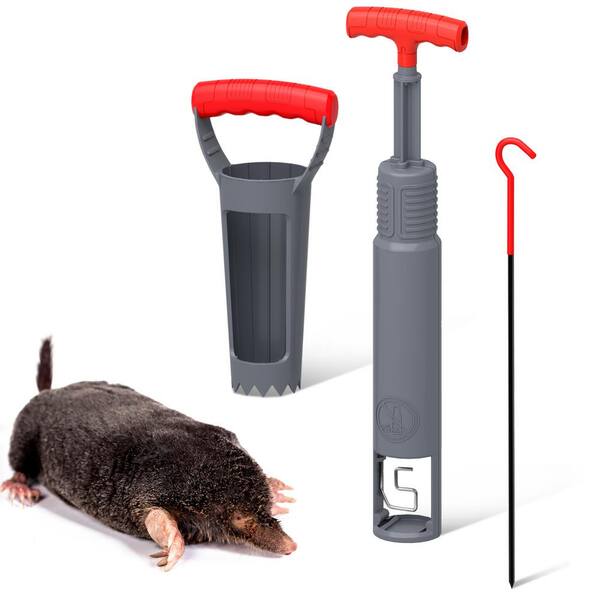Gopher Control Services: Safeguard Your Landscape Today
Gopher Control Services: Safeguard Your Landscape Today
Blog Article
Ultimate Overview to Gopher Control: Tips for a Pest-Free Garden
In the search of maintaining a growing yard, dealing with gophers can offer a powerful difficulty to even the most skilled garden enthusiasts. By comprehending gopher behavior, implementing natural repellents, making use of reliable trapping methods, and establishing physical obstacles, you can substantially minimize gopher invasions and guard the wellness of your garden.
Comprehending Gopher Actions
To efficiently regulate gophers in your yard, it is vital to understand their habits patterns and practices. Gophers are singular animals, with each gopher preserving its own burrow system.

Natural Repellents and Growing Techniques
Carrying out all-natural repellents and strategic growing methods can effectively discourage gophers from wreaking havoc in your yard. Furthermore, producing barriers underground making use of gopher baskets made of cable mesh can secure the roots of your plants from being consumed by gophers.
In addition, utilizing all-natural killers like owls, serpents, or tamed pets such as pet cats can aid manage the gopher population in your location. Owls and serpents are natural killers of gophers and can aid keep their numbers in check. Urging these predators to occupy your yard can supply an all-natural form of gopher control.
Reliable Trapping Strategies
Utilizing humane and efficient capturing techniques is vital in taking care of gopher infestations in your garden. When selecting traps, it is important to choose ones especially made for gophers to enhance the chance of capturing success.
Box traps are placed near gopher piles and work as a welcoming tunnel for the gopher to go into - gopher control services. Once the gopher is within, the catch triggers, recording the pest. Passage catches are put straight right into gopher passages and are effective at catching gophers as they travel with their burrows. Cinch catches are placed generally passage of the gopher and are set off when the gopher pushes against the trigger plate.
To improve the efficiency of trapping, it is recommended to situate active passages by probing the ground and establishing traps in these locations. Frequently inspecting and resetting catches is vital for effective gopher control. By using these trapping strategies, you can properly minimize gopher populaces in your garden and go to this website protect against additional damages to your plants.
Creating Physical Obstacles
One reliable method for preventing gophers from invading your garden is to set visit the site up tough wire mesh obstacles underground. These obstacles act as a physical deterrent, avoiding gophers from tunneling right into your yard beds and causing damage to your plants.

Maintaining a Normal Tracking Schedule
Regular tracking of your garden is crucial in properly taking care of gopher activity and stopping possible damage to your plants. By developing a regular examination timetable, you can immediately discover any indicators of gopher existence and take needed activities to address the problem prior to it intensifies. Allot certain times weekly to go through your yard, paying close attention to any kind of mounds, passages, or wilting plants, as these can indicate gopher task.
During your tracking sessions, consider utilizing gopher-specific indications such as fresh dust mounds, chomped origins, or newly dug tunnels to determine energetic areas. Keep a journal or map to track these transfer time, aiding you pinpoint high-traffic zones that call for instant intervention. Furthermore, consider installing motion-activated cams or catches in tactical places to collect even more details about gopher behavior patterns in your garden.
Routine tracking not just enables you to examine the performance of your gopher control methods but likewise enables you to adapt your methods based upon real-time monitorings, inevitably bring about a much healthier and pest-free yard.
Conclusion
In final thought, managing gophers in your garden needs a combination of comprehending their habits, using natural repellents and planting strategies, effective capturing strategies, developing physical obstacles, and preserving a routine tracking routine. By executing these additional info techniques, you can keep your garden pest-free and ensure the health of your plants. Remember to stay cautious and proactive in your gopher control efforts to preserve an attractive and growing yard.
By recognizing gopher actions, executing all-natural repellents, making use of reliable capturing approaches, and establishing physical obstacles, you can significantly minimize gopher invasions and protect the health of your yard.
Furthermore, producing obstacles underground making use of gopher baskets made of wire mesh can shield the roots of your plants from being eaten by gophers.Box traps are placed near gopher piles and serve as a welcoming passage for the gopher to enter. Passage traps are placed directly right into gopher tunnels and are reliable at catching gophers as they take a trip through their burrows. Cinch catches are placed in the major tunnel of the gopher and are caused when the gopher pushes versus the trigger plate.
Report this page